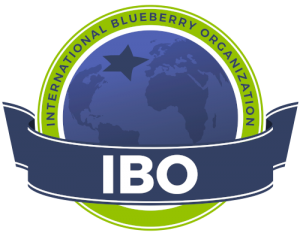The first fresh U.S. blueberries have arrived in mainland China after access was granted in May last year after years of hard work and bilateral negotiation.
The U.S. Highbush Blueberry Council (USHBC) teamed up with leading Chinese fruit retailer Pagoda to hold a ceremony celebrating the arrival - the first-ever promotion of USA fresh blueberries in China.
The ceremony also featured Lindsay Malecha, Deputy Director of the Guangzhou, China office of the United States Department of Agriculture (USDA) Agricultural Trade Office (ATO).
The blueberries in Pagoda's three-pallet inaugural shipment were grown by Norris Farms in the Umpqua River Valley in Oregon and sent to China by air freight. They were supplied by Washington State-based Superfresh Growers.
“The microclimate in the Umpqua River Valley yields delicious, large, high-quality blueberries over a long season,” said Jeff Webb, Director of International Business Development at Superfresh Growers.
“As a fifth-generation family-owned company, we are delighted that our blueberry program is supplied by a family farm with a multi-generational legacy spanning nearly 50 years. We believe that this joint depth of experience, along with our respective family-owned values and business practices, will shine through to consumers in China when they taste our U.S. blueberries.”
Years in the making
To gain access to the China market, the U.S. government and the USHBC worked together with China’s customs authorities to develop export phytosanitary protocols for fresh blueberries, a process which took years of patient legwork. The breakthrough came in May of 2020 when fresh U.S. blueberries received final approval for import into China from the General Administration of Customs of China (GACC).
“I’m excited and honored to join the U.S. Highbush Blueberry Council, our great friends at Pagoda, and consumers here in Shenzhen today to celebrate this inaugural promotion of USA blueberries to China,” said Malecha of USDA ATO Guangzhou.
“It highlights the collaborative work between our countries that benefits U.S. blueberry farmers and makes it possible for distinguishing Chinese consumers here and across China to enjoy delicious U.S. blueberries for years to come.”
"Opening the Chinese market was a major milestone for the U.S. highbush blueberry industry last year, and we are excited to celebrate the successful arrival of USA fresh blueberries in China this season,” said Alicia Adler, Vice President for Global Business Development at USHBC.
“On behalf of the U.S. Highbush Blueberry Council, I would like to acknowledge the hard work and dedication of the growers exporting to China this year, and express gratitude to the importers and retailers in China for their commitment to growing blueberry demand."
Pagoda to run promotions for U.S. blueberries
With over 4,700 stores across China, Pagoda is China’s largest fruit shop chain and well-suited to marketing this inaugural shipment of U.S. fresh blueberries to China this year. The berries in this shipment were selected to match Pagoda customers’ demand for large and sweet berries.
The berries will be sold in a limited number of Pagoda stores in the Pearl River and Yangtze River deltas as a premium grade product due to the size and sweetness level.
"Thank you to the Agricultural Trade Office of the U.S. Consulate General in Guangzhou, the U.S. Highbush Blueberry Council, and other partners for cooperating with Pagoda,” said Zhang Wangbo, General Manager of Pagoda Group's Commodity Center.
“Pagoda is very honored to be the first company to promote fresh American blueberries to Chinese consumers. We will leverage Pagoda’s strong brand and sales channels to promote these blueberries so that more Chinese consumers can understand, taste and fall in love with USA blueberries."
"Through our cooperation with hundreds of suppliers around the world, we have brought delicious new fruits to more and more consumers in China—a trend we hope to continue in the future through cooperation with new high-quality suppliers.”
History of blueberry cultivation in U.S.
The history of cultivated blueberries began in 1893 when an American farmer became interested in commercializing blueberries. That farmer eventually teamed up with a USDA botanist, and the pair used wild “lowbush” blueberry plants as a starting point to breed the original highbush blueberries, ultimately marketing a commercial crop for the first time in 1916.
The United States has since continued as a leader in global blueberry breeding and cultivation. In 2020, growers in the U.S. produced an estimated 149.6 million kg of fresh blueberries and another 136.2 million kg of processed blueberries, ranking it first worldwide in blueberry production. The U.S. exports millions of kilograms of both fresh and processed blueberries each year to markets all around the globe.
The U.S. is furthermore home to many of the world’s leading blueberry breeding programs. U.S. blueberry growers actively adopt these modern varieties to match their plantings with local climate conditions and market demands, thereby growing berries that deliver the consumer an optimal eating experience.
23/07/2012

